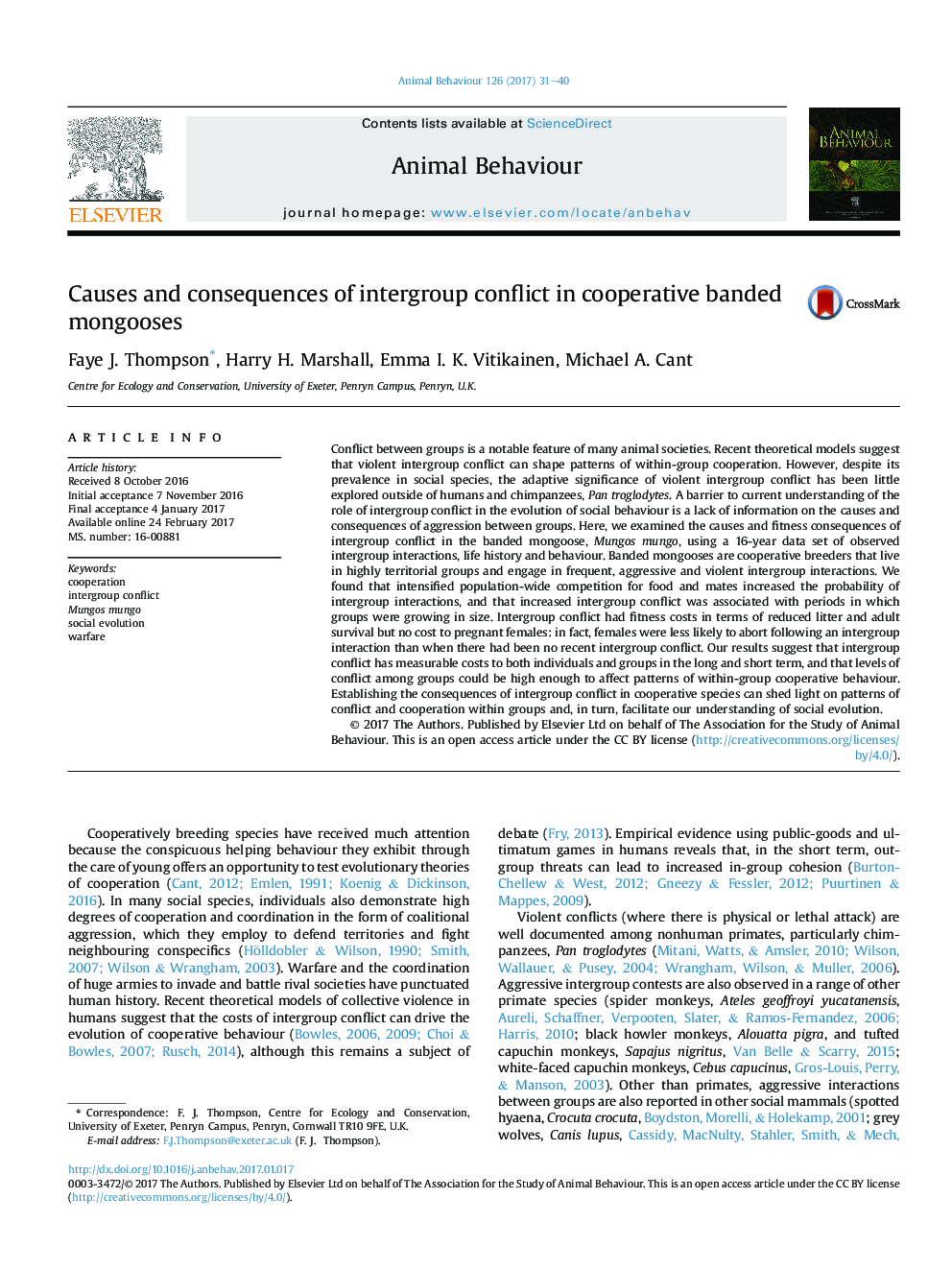| Article ID | Journal | Published Year | Pages | File Type |
|---|---|---|---|---|
| 5538512 | Animal Behaviour | 2017 | 10 Pages |
â¢Intergroup conflict in banded mongooses is driven by resource competition.â¢Conflict occurs when population density is high and rainfall low, and in oestrus.â¢Intergroup conflict has fitness costs through reduced pup and adult survival.â¢Pregnant females are less likely to abort during periods of intergroup conflict.â¢Intergroup conflict has measurable long- and short-term costs.
Conflict between groups is a notable feature of many animal societies. Recent theoretical models suggest that violent intergroup conflict can shape patterns of within-group cooperation. However, despite its prevalence in social species, the adaptive significance of violent intergroup conflict has been little explored outside of humans and chimpanzees, Pan troglodytes. A barrier to current understanding of the role of intergroup conflict in the evolution of social behaviour is a lack of information on the causes and consequences of aggression between groups. Here, we examined the causes and fitness consequences of intergroup conflict in the banded mongoose, Mungos mungo, using a 16-year data set of observed intergroup interactions, life history and behaviour. Banded mongooses are cooperative breeders that live in highly territorial groups and engage in frequent, aggressive and violent intergroup interactions. We found that intensified population-wide competition for food and mates increased the probability of intergroup interactions, and that increased intergroup conflict was associated with periods in which groups were growing in size. Intergroup conflict had fitness costs in terms of reduced litter and adult survival but no cost to pregnant females: in fact, females were less likely to abort following an intergroup interaction than when there had been no recent intergroup conflict. Our results suggest that intergroup conflict has measurable costs to both individuals and groups in the long and short term, and that levels of conflict among groups could be high enough to affect patterns of within-group cooperative behaviour. Establishing the consequences of intergroup conflict in cooperative species can shed light on patterns of conflict and cooperation within groups and, in turn, facilitate our understanding of social evolution.
